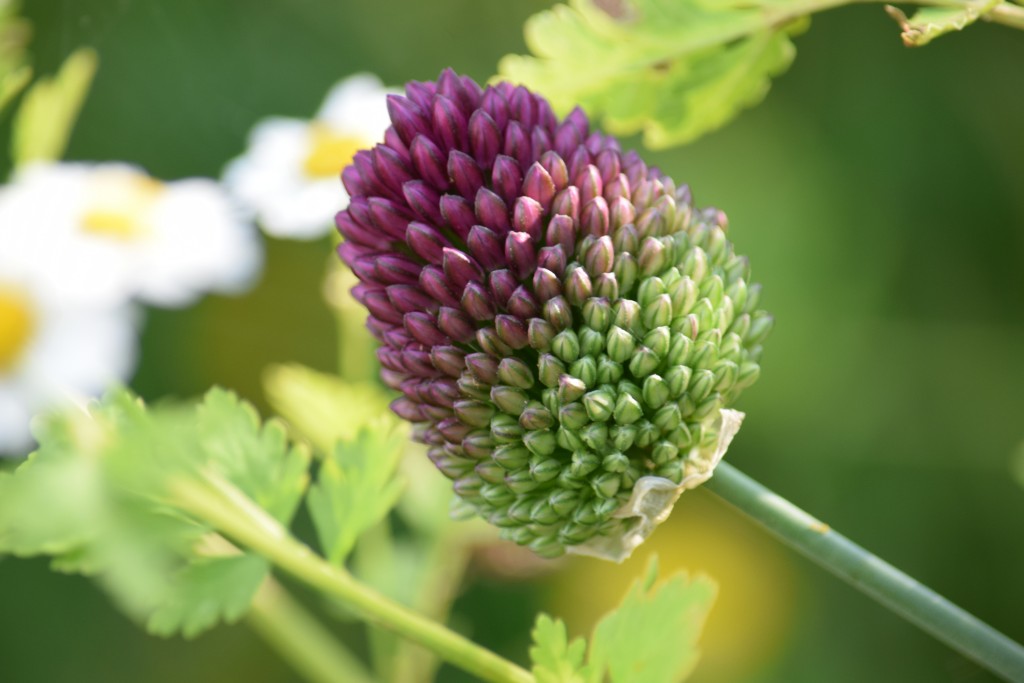Can Feverfew Help Migraine Sufferers?


By Ginger Hultin, MS RDN CSO
If you are starting to see wild flowers bloom that look in some ways like a daisy or chamomile and in some ways like a chrysanthemum, you may be looking at feverfew, a perennial plant with medicinal properties. The medicinal part of the feverfew plant is the dried leaves though extracts and fresh leaves are also sometimes used. Traditional and folk medicine, especially Greek and early European herbalists, found many uses for feverfew from reducing fevers, headaches and migraines to helping with nausea and diarrhea, allergies, asthma and vertigo. It is also commonly used for fertility. But is feverfew safe and how is it used today? Read on to learn more about the many uses of this plant coming into blood this summer and if it may be right for you.
Of all the possible therapeutic effects, feverfew is most famously used for migraine headaches and some clinical research shows that taking it orally can reduce symptoms including pain, nausea, and sensitivity to light, especially for those with more frequent migraines. One study used 300mg of feverfew extract to reduce migraines but keep in mind that feverfew is often used in a combination of herbs to help prevent migraine frequency. Other studies have shown benefit from a range of 50-150mg of feverfew for up to four months without negative effects, though with any herbal extract, standardization can be a challenge for identifying specific therapeutic dosing.

Feverfew
Research indicates that the medicinal benefit of feverfew likely comes from compounds called sesquiterpenoids lactones and flavonoids including glycosides and pinenes. Though these compounds may sound unfamiliar, they are a natural part of other fruits, vegetables and plants that humans and animals consume. Like many natural compounds and antioxidants, these sesquiterpenoids and flavonoids have shown promise for antimicrobial, anti-inflammatory and even anti-tumor properties. Feverfew grows in temperate regions around the world and blooms in the summer from June to October so you may notice it in your garden with other wildflowers this season.
As with many natural compounds, there are some safety considerations for feverfew. Use caution with this extract when pregnant as it can cause uterine contractions. For fertility purposes, it is best to discuss with your doctor and a trained herbalist to assess for safety. For migraines, feverfew has proven generally well tolerated with no reported side effects. There are some drug interactions to keep in mind and consult your doctor about including blood thinning medications and cytochrome P450 substrates. Keep in mind that those with allergies to this plant family should avoid using feverfew products – even those with a ragweed allergy!
As research on feverfew continues to emerge, you will likely see it being used for a variety of health conditions though more scientific evidence is needed to fully understand its potential. Let us know if you’ve had success with or have questions about feverfew!
Resources
Natural Medicines Database. Feverfew. https://naturalmedicines.therapeuticresearch.com/databases/food,-herbs-supplements/professional.aspx?productid=933. Updated 5/24/16. Accessed 7/24/16.
Pareek A, Suthar M, Rathore GS, Bansal V.Feverfew (Tanacetum parthenium L.): A systematic review. Pharmacogn Rev. 2011;5(9):103-10
Review Sesquiterpenoids Lactones: Benefits to Plants and People. Chadwick M, Trewin H, Gawthrop F, Wagstaff C. Int. J. Mol. Sci. 2013, 14, 12780-12805.